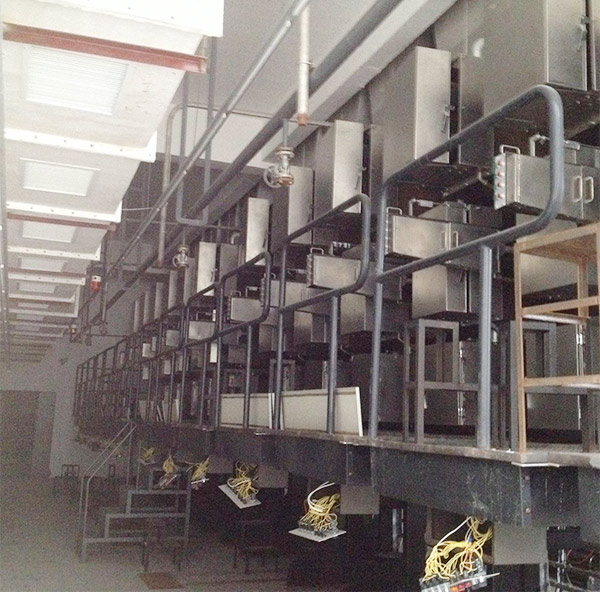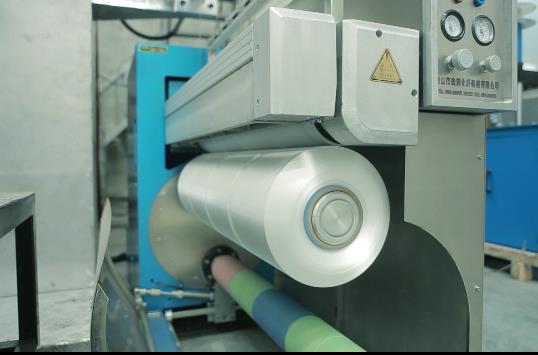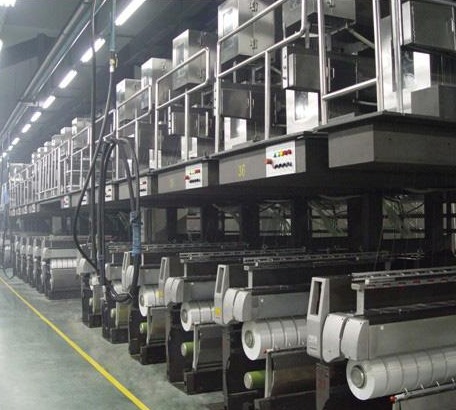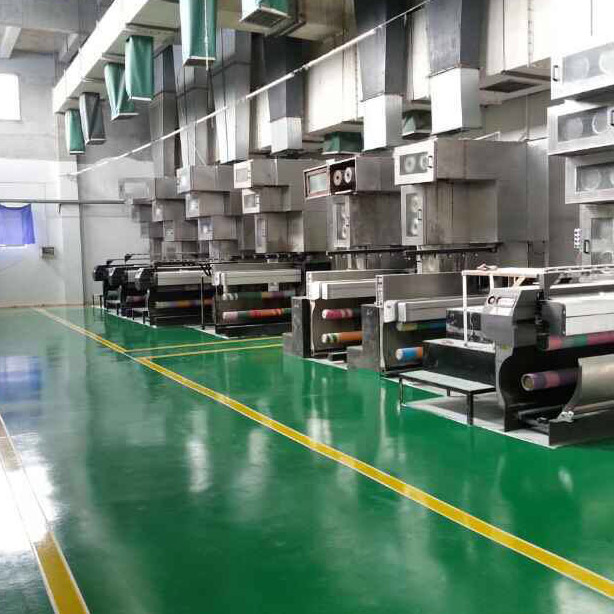- Polypropylene spinning machine
- Polypropylene FDY equipment
- Polyester POY spinning machine
- Polyamide FDY common and high strength equipment
- Polyester FDY equipment
- Polyester high strength equipment
- polyester、Polyamide、 Polypropylene BCF equipment
- Small spinning machine
- All kinds of spinning special parts
- Changzhou Fubon Chemical Fiber Machinery Factory Technical: The reliable choice for polypropylene spinning equipment
- Education shapes talents, and craftsmanship empowers the future. Grateful for teachers' kindness and nurturing of students, Fubang Machinery wishes all teachers a happy Teachers' Day!
- The exchange event on the digital and intelligent transformation and development of the textile and garment industry was held in Haicheng
- During the White Dew season, meticulous considerations for polypropylene spinning production
- The grand selection ceremony for the 2025 China National Textile and Apparel Council Science and Technology Award - Mulberry and Hemp Scholar Award was held
- The years have been eventful, and the heroes sing their praises. Fubang Machinery warmly congratulates the 80th anniversary commemoration of the Victory of the War of Resistance against Japanese Aggression on its complete success!

- Contact:Mr. Huang Guofu
- Cel:0086-13901505556
- Fax:0086-519-83341119
- Email:czfb5556@126.com
- Add:No. 288-8 ChangLi Rd, Huangli Town, Changzhou, JS PRV.
Textile Express
Insufficient orders in the textile market, cotton yarn prices continue to fall
Last week, the textile market continued to face a shortage of orders, and yarn inventory growth became more obvious. Some small spinning mills began to sell at low prices. Withdrawal of funds to reduce pressure, domestic cotton yarn prices continued to fall.
Due to insufficient demand from downstream enterprises, the inquiries and transactions of Indian and Pakistani cotton yarns were cold, and the quotations of Indian yarns led the decline in foreign yarns, but the average international cotton yarn price was still higher than that of conventional domestic yarns by RMB 732/ton. New orders from weaving enterprises are still dominated by small batches, grey fabric stocks continue to accumulate, market sales competition is fierce, and the price of pure cotton fabrics has fallen. The price of polyester staple fiber fluctuated and fell with PTA.
01New cotton shows signs of price cut sales
According to the Ministry of Commerce, my country's foreign trade micro-enterprise entities mainly have six major difficulties. Among them, trade risks are high, costs are rising, supply chain jams are high, and orders are low.
In the domestic cotton market, seed cotton harvesting has basically come to an end, new cotton processing speeds up, and sales are sluggish. According to data from the National Cotton Market Monitoring System, as of the week of November 26, 2021, 453,000 tons of lint were processed nationwide, a decrease of 10.3% from the previous month, and 129,000 tons of lint was sold, a decrease of 7.9% from the previous month. The high-cost new cotton is facing a sales bottleneck. The quantity of Xinjiang cotton shipped by highway is significantly lower than the level of the same period of the previous year, and the new cotton is showing signs of price reduction. In the short term, downstream textile companies mainly purchase raw materials through bidding for reserve cotton, and use quotas to purchase port consignment cotton, and there are few cargo purchases.
Under the dual pressures of weaker consumption in the terminal apparel and grey cloth markets and high raw material costs, textile companies have been unable to sustain orders and operating pressures have intensified. Some downstream companies have gradually begun to reduce production and prices to reduce inventory to ease the tight capital flow. On November 22, La Chapelle, one of the domestic clothing giants, filed for bankruptcy.
In the short term, the textile industry is gradually entering the off-season, and enterprises maintain low profit operations, and the domestic cotton market continues to be under pressure.
02A new strain of "Omi Keron" struck
Last Friday, under the influence of the new strain of "Omi Keron", international oil prices panicked. WTI crude oil fell by 14%, while Brent crude oil fell by more than 12%. At the same time, the joint production of polyester has been reduced by 20%-25%. The price of polyester filaments has been slightly adjusted last Thursday, and production and sales have risen on the same day.
With the passage of time, the load of the polyester factory gradually recovered, but at this time the market boom has passed, the downstream society has a high polyester inventory, and the production and sales of polyester filaments are down. Polyester manufacturers finally couldn't help but start to reduce production, and due to the good benefits from previous production cuts, polyester manufacturers are facing problems such as low production and sales, high inventory barriers, missing costs, and insufficient demand. It is predicted that the implementation of this production reduction will be more intense.
In the short term, under the catalysis of production cuts, the mentality of “buy the rise and not buy the fall” will be stimulated again. The downstream will carry out centralized replenishment, and the inventory of polyester manufacturers will fall. Moreover, due to the continuous fall of upstream prices, their own The reduction in production will also restore the profits of polyester manufacturers. In the medium and long term, the reduction of polyester inventory this time may be just a transfer of inventory. The orders for the "Double Eleven" and "Double 12" shopping festivals have come to an end. From this we can see that the domestic demand in the market has gradually weakened, and it should have appeared. The foreign trade market at the end of the year did not appear for a long time, and now a new strain of "Omi Keron" has emerged. Foreign countries are facing the situation of being closed again, and many shipping routes have been closed, and the foreign trade market is not optimistic. The situation of the next demonstration will directly affect the mentality of polyester manufacturers, and therefore this overhaul is imperative.
03 Summary of the Third Quarterly Report of Textile and Apparel
Environmental disturbances, revenue recovery, improved turnover, and profit decline in 2021 Q3 A-share textile and apparel revenue +5.6%, more than the same period in 19 years, net profit fell 21%. Gross profit margin is 28.1%, -7.6p.p.; inventory turnover days are -36 days year-on-year, which is an improvement. Among them, the growth rate of men's clothing income was relatively stable, while the income and profits of the casual wear segment declined significantly.
Key companies: The recovery is better than the industry. Half of the companies' performance exceeded the top 50% of the epidemic. The net profit of key A-share companies exceeded the same period in 19 years, and nearly 1/3 of the company's net profit increased by more than 20% over the same period in 19; the inventory turnover ratio of most key A-share companies Accelerated in the same period in 19 years; Q3 turnover of key Hong Kong stock companies achieved good growth. According to our expectations combined with consensus expectations, more than 50% of A-shares and overseas companies expect Q4 net profit growth to slow by more than 20p.p. compared to the previous three quarters. Therefore, Q4 growth may return to normal.
Summary of comments: Key brand companies are better than the industry, manufacturing companies have grown outstandingly in the sports shoes and apparel sector, Anta Sports has maintained steady growth in 21Q3, and Li Ning, Xtep International, and Huali Group have achieved outstanding growth; Biyin Lefen, Hailan Home and other inventory optimization and performance Continued recovery, showing resilience; 21Q3 growth of Disu Fashion, Semir Apparel, and Gelisi has slowed down, but is optimistic about steady growth throughout the year; Taobo’s business is gradually recovering and profit margins have performed well; Peacebird’s short-term performance is under pressure, and it is optimistic about organizational incentives and Rebound in winter; Kairun shares have a good recovery trend; due to the high cotton price and the recovery of Vietnam's production capacity, Blum Oriental's 21Q3 performance has increased.
Disclaimer: This article is compiled from the Internet, and the copyright belongs to the original author; if there is any infringement, please inform it in time and delete it after verification.
- Changzhou Fubon Chemical Fiber Machinery Factory Technical: The reliable choice for polypr
- Education shapes talents, and craftsmanship empowers the future. Grateful for teachers' ki
- The exchange event on the digital and intelligent transformation and development of the te
- During the White Dew season, meticulous considerations for polypropylene spinning producti
- The grand selection ceremony for the 2025 China National Textile and Apparel Council Scien
- The years have been eventful, and the heroes sing their praises. Fubang Machinery warmly c
- The romantic Qixi Festival is here! Fubang Machinery, with its exquisite craftsmanship, co
- The 2025 Qilu Fashion Conference was held in Jinan
- Comprehensive Analysis of Core Components of polypropylene spinning machines: From Screw E
- The Start of Autumn has arrived, and the coolness of autumn begins. From the solar terms t




